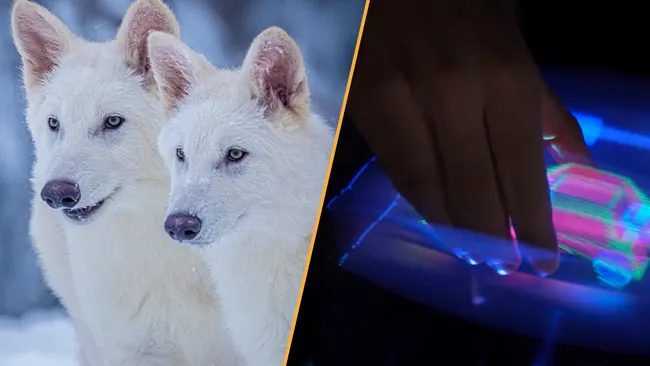April 12, 2025: Our weekly roundup of the latest science in the news, as well as a few fascinating articles to keep you entertained over the weekend.
It’s been a big week in science headlines, thanks to a bold announcement from biotech firm Colossal Biosciences: they claim to have brought the dire wolf (Aenocyon dirus) back from extinction—over 10,000 years after it vanished. The company calls it the “world’s first de-extinction.” But does this really qualify?
The three pups, named Romulus, Remus, and Khaleesi, were not cloned from original dire wolf DNA. Instead, scientists genetically modified gray wolf (Canis lupus) embryos, using reconstructed ancient DNA from dire wolves. They pinpointed 20 genetic differences believed to account for the dire wolf’s unique traits, and edited those into the gray wolf genome.
While the achievement has stirred excitement, many experts remain skeptical. For one, past genetic studies suggest that dire wolves weren’t closely related to gray wolves, meaning that altering just 20 genes may not be enough to recreate a true dire wolf. Critics also question how such animals could be safely released into the wild, considering the potential risks to modern ecosystems and existing wildlife.

In other cutting-edge science news, interactive 3D holograms — long a staple of science fiction — are moving closer to reality.
Researchers have made a breakthrough in mixed reality technology by developing holograms that can actually be touched and manipulated. Using elastic materials in their display systems, the team has created projections that respond to physical interaction — you can grab, poke, and press them, bringing us one step closer to fully immersive holographic environments.
Though the tech is still in early development, scientists believe it holds great promise for education, entertainment, and virtual communication in the near future.
